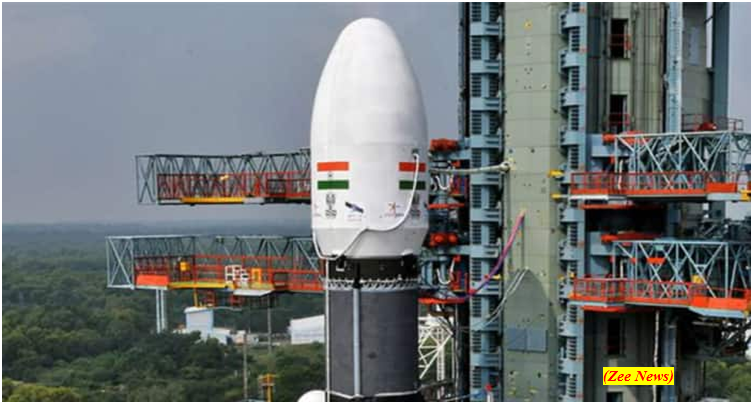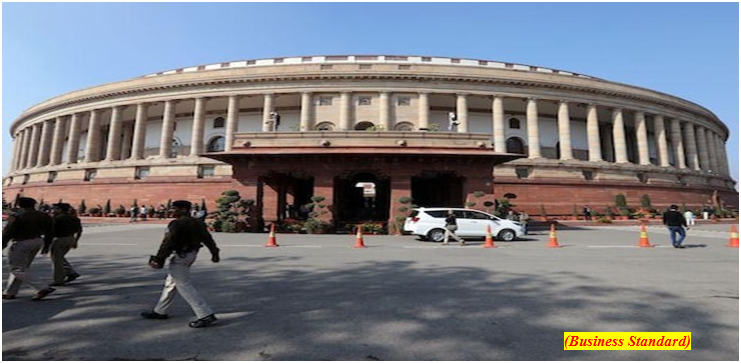Gaganyaan targeted to be launched in the fourth quarter of 2024 (GS Paper 3, Science and Tech)

Why in news?
- Science & Technology Minister said that India’s maiden human space flight ‘H1’ mission is targeted to be launched in the fourth quarter of 2024.
- The minister in a written reply informed that the paramount importance is that of the safety of the crew.
Uncrewed ‘G1’ mission:
- In view of the paramount importance of crew safety, two Test Vehicle missions are planned before the ‘G1’ mission to demonstrate the performance of crew escape system and parachute-based deceleration system for different flight conditions.
- The uncrewed ‘G1’ mission is targeted to be launched in the last quarter of 2023 followed by the second uncrewed ‘G2’ mission in the second quarter of 2024, before the final human space flight ‘H1’ mission in the fourth quarter of 2024.
- The first uncrewed flight of Gaganyaan programme i.e., ‘G1’ mission is aimed at validating the performance of Human rated launch vehicle, Orbital module propulsion system, mission management, communication system and recovery operations. The mission will carry a humanoid as payload.
IMAT:
- ISRO in November 2022 conducted the Integrated Main Parachute Airdrop Test (IMAT) of its crew module deceleration system.
- The test was conducted at the Babina Field Fire Range (BFFR) in the Jhansi district of Uttar Pradesh during which a 5-ton dummy mass, equivalent to the Crew module mass, was taken to an altitude of 2.5 kilometers and dropped using the Indian Air force’s IL-76 aircraft.
- The test simulated a unique situation when one main parachute failed to open.
What’s next?
- The astronaut designates for human space flight mission are identified and are currently undergoing their mission specific training at Bengaluru.
Samarthya sub-scheme of Mission Shakti
(GS Paper 2, Governance)
Why in news?
- Recently, Union Minister for Women & Child Development, Smriti Zubin Irani in a written reply in the Rajya Sabha gave detail of HEW under ‘Samarthya’ sub-scheme of ‘Mission Shakti and Gender Resource Centers (GRC).

Samarthya Scheme:
- The Government has initiated a number of schematic and legislative interventions over the past few years for educational, social, economic and political empowerment of women. These have resulted in improving the status of women on many counts.
- Recognising the need for a single window system for inter- sectoral convergence of schemes and programs meant for women, the Government is setting up Hub for Empowerment of Women (HEW) at National, State and District levels under ‘Samarthya’ sub-scheme of ‘Mission Shakti, an Umbrella Scheme for safety, security and empowerment of women.
- The Hubs aim to facilitate women’s access to various institutional and schematic set ups for information dissemination and availing services pertaining to healthcare, quality education, career and vocational counseling/ training, financial inclusion, entrepreneurship, backward and forward linkages, health and safety for workers, social security and digital literacy etc.
Gender Resource Centers (GRC):
- Under Deen Dayal Antyodaya Yojana- National Rural Livelihoods Mission (DAY-NRLM), a total 1411 Gender Resource Centers (GRC) have been formed in 13 States of the country till date.
- The GRCs are called by different names in many States such as 'Lok Adhikar Kendra in Madhya Pradesh', 'Sangini Kendra in Chhattisgarh' and 'Pragya Kendra in Odisha'. Based on the level of preparation and their respective gender operational strategies, different States have different plans and models of GRCs.
Mandate of GRCs:
- GRCs are run and managed by Cluster Level Federations (CLFs) or by Block Level Federations (BLFs), as per the local context. GRC is the apex institutional structure in the institutional mechanism to address gender issues under DAY-NRLM.
- The cases related to rights and entitlements and gender-based violence of Self Help Group (SHG) members are escalated to GRC by Self Help Groups (SHGs), Village Organizations (VOs) or Cluster Level Federation (CLF) based on the merit of cases.
- GRC refers the cases, if need be, to different public service points such as One Stop Centers, Police, District Legal Service Authorities etc.
RS nominates 10 members to panel on Multi-State Cooperative Societies Bill
(GS Paper 2, Polity and Governance)
Why in news?
- Recently, Rajya Sabha nominated 10 members to the joint committee of Parliament to examine the Multi-State Cooperative Societies (Amendment) Bill, 2022.

Details:
- The Lok Sabha referred the Bill to the committee. 21 members of the joint panel will be from the Lok Sabha and 10 from the Rajya Sabha.
- These members are Ghanshyam Tiwari, Surendra Singh Nagar, Dhananjay Bhimrao Mahadik and Ram Chander Jangra of the BJP, Rajani Ashokrao Patil of the Congress, Sukhendu Sekhar Ray of the Trinamool Congress, N R Elango of the DMK, Vikramjit Singh Sahney of the AAP, Sujeet Kumar of the BJD and S Niranjan Reddy of the YSRCP.
- The Upper House adopted a motion for nomination to the joint committee of Parliament on this Bill through a voice vote.
About Multi-State Co-operative Societies (Amendment) Bill, 2022:
Way Forward:
The panel will submit its report to the Lok Sabha in the first week of the second part of the Budget session (which usually begins in March).




